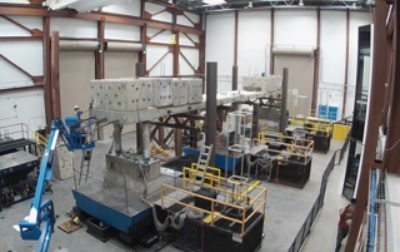Project Lead: Travis Thonstad, Civil & Environmental Engineering, University of Washington
Project Collaborators: Marc O. Eberhard; John F. Stanton, Civil and Environmental Engineering, University of Washington; Islam Mantawy; David H. Sanders, Civil and Environmental Engineering, University of Nevada, Reno
eScience Liaison: Valentina Staneva
Currently, the assessment of the integrity and safety of structures subjected to earthquakes relies on a combination of visual inspection and engineering judgement. This process is time consuming and can miss critical damage that is not visible. New approaches are needed to rapidly and reliably inform decisions about closures and restrictions in service for bridges and buildings after seismic events.
The project aims to use recorded audio signals to detect structural damage during earthquakes; specifically, damage heard during shake table testing of a quarter-scale concrete bridge. The challenges that have been encountered include: the audio signals are not synchronized with one another, multiple bar fractures tend to occur at nearly the same instant and the audio signals include high levels of noise from machinery. Several different methods have been employed to separate out the noise from the sounds of damage, including principal component analysis (PCA), independent component analysis (ICA), median filtering, continuous wavelet transform (CWT) and feature-based clustering using spectral and statistical measures of the signal. Thus far, decomposition (PCA and ICA) and CWT has proven ineffective at isolating damage signals.
Future work will include using maximums in structural response as peak predictors, incorporating prior information from fatigue models and estimating damage locations within the structure using time of arrival differences between microphone locations. The methodology will be tested on other experiments available through the Network for Earthquake Engineering Simulation (NEES) data repository.

